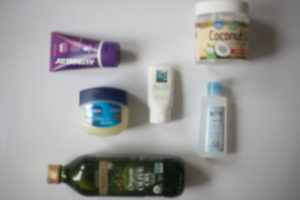This editorial series, S-E-X, is brought to you by the Fort Worth Moms Blog and Andrea Palmer, MD FACOG with Fenom Women’s Care. Our friends at Under the Hood Physical Therapy sponsored and crafted this blog post for the S-E-X editorial series, and broke down the ABCs of an orgasm and its effects on health and wellbeing. All 15 original articles from the S-E-X series can be found on our website.
Orgasms and pelvic health go together like avocados and toast. A match made in the kitchen (or wherever the mood strikes . . . ).
Pelvic health encompasses a multitude of topics and diagnoses — from our menstrual cycles to bladder and bowel function, and from digestion to pelvic pain, sexual disfunction, and everything in between. Many times, these symptoms are overlooked or worse, thought of as normal, especially in the motherhood crowd.
This may sound a bit far-reaching, but orgasms positively affect almost all aspects of pelvic health, and here’s how.
O — Oxytocin
This is often referred to as the love hormone. When you experience an orgasm, a generous release of oxytocin gives you ALL dem feels.

When you have a consistent release of oxytocin, these lovey-dovey behavioral changes help you manage stress better, which decreases cortisol production, which then raises your pain threshold (decreasing your sensation of pain), improves digestion, and prevents excessive weight gain. In more relatable terms: If you have a stressful job, experience pelvic pain, suffer constipation, and have weight management issues, oxytocin can help.
Orgasms WORK. Now you are off to a pelvic-healthier life! Winning.
R — Rest
This one might be laughable to some mamas out there; however, the sleep that you are able to snag on a night that you’ve had an “O” can potentially be much more restful than otherwise.
Adequate sleep is incredibly important for many reasons, but specifically when we look at pelvic health. It is essential in regulating bowel and bladder function, normal digestion, as well as managing pain, stress, and weight. Now, y’all already know that the release of oxytocin with an orgasm helps to regulate pain, stress, and weight — but now add a good night’s sleep on top of that, and you’ve got even greater management of those issues!
Let’s talk a little more about how sleep affects digestion, bowel, and bladder function.
During sleep, your body secretes an antidiuretic hormone, meaning fluid-recycling processes decrease. This keeps you from having to pee numerous times during the night. Conversely, if you sleep very little or intermittently throughout the night, this hormone doesn’t release as it should, and you might find yourself with the urge to urinate when you should be sleeping. This can turn into an annoying cycle, leading to the development of poor bladder habits and frequent urination during the night.
When you snooze, your parasympathetic nervous system activates, and your body is able to focus on digestion. This is why morning poops are a thing. Your body has been working on moving things around overnight and a successful bowel movement in the morning is to show for that. Therefore, if you aren’t sleeping well, your body isn’t able to focus on digestion as it’s designed to do, which could lead to constipation. This may not seem like a terrible issue, but chronic constipation means increased pressure on your pelvic floor muscles, causing them to weaken — which can lead to pelvic organ prolapse, hemorrhoids, incontinence, and other pelvic floor disfunction.
Long story short: If you struggle with any of these issues, get yourself some sexy time, have an orgasm, and SLEEEEEP.
G — Good Vibrations
Ok. Let’s back that thang up for a sec and make sure we all know about one of the most important keys to having an orgasm (second to mindset): the clitoris. This humble piece of our anatomy is essential to a successful orgasm in the majority of women, and it can also help those of us who experience pain during sex to reduce that pain.
The clitoris is the little hooded tissue nestled near the top of the vulva, just above the urethra (where pee exits). Sexual stimulation of the clitoris, with or without simultaneous vaginal penetration, for a duration of 10 seconds up to however long it takes (depending on a number of factors), will likely result in a satisfying, oxytocin-releasing, pain-reducing, stress-relieving, pelvic floor-strengthening orgasm.
Stimulation of the clitoris prior to penetrative sex, and/or simultaneously with penetration, helps to prepare the vaginal tissues by increasing lubrication and blood flow, as well as aiding in relaxation of the pelvic floor muscles to allow successful penetration. So, for those of us who experience pain with vaginal penetration, this is how clitoral stimulation can aid in the reduction — or elimination — of that pain. Now, there’s typically a whole lot more to address with painful sex, but that’s for another post.
A (in) — DHEA
Dehydroepiandrosterone (DHEA) is a hormone secreted by the adrenal glands that contributes to sex hormone production (estrogen and testosterone).
The important thing about DHEA is that it is linked to increasing immunity, muscle strength, mood, and energy (check out this informative article by WebMD). What this means for pelvic health is that it increases your fight against yeast infections, urinary tract infections, and bacterial vaginosis through charging up the immune system; it helps prevent bowel and bladder control problems by contributing to an increase in pelvic floor muscle strength and helps to manage pain by improving mood.
So, enjoy an orgasm a la DHEA.
 S — Strength
S — Strength
That pelvic floor strength, though. During an orgasm, your pelvic floor muscles repeatedly contract involuntarily (on their own), bringing blood flow, nutrients, and lubrication to the vagina and surrounding tissues. This helps bulk up and strengthen the pelvic floor muscles. Sweeeeet action.
Why is pelvic floor strength important, you ask? The role of these dear, sweet, complicated group of muscles is to
- Support your pelvic organs (uterus, bladder, and rectum) so they don’t fall into your vagina (prolapse).
- Maintain continence (not leak pee, poo, or gas).
- Stabilize your core.
- Provide increased sexual pleasure.
So, we’ve got to have these suckers in good, strong, working condition to fulfill all of these very important duties. Having orgasms is probably the most enjoyable way to work toward this strengthening goal!
Important note (aside from orgasms): Not everyone needs to do actual Kegel exercises. No pelvic floor is the same, and some women need to learn to relax the pelvic floor before starting any strengthening. My best advise is to see a pelvic health physical therapist to find out exactly where to start with your pelvic floor movement.
M — Movement
Sex requires movement. I mean, we’re basically exercising everything — our brains, our pelvic floors, our arms, legs, butt, and abs — even if only for a few seconds. It’s like a naked version of a HIIT workout . . . .
In all seriousness, it is vitally important that you exercise ALL of your muscles (including your brain), in order to live a pelvic-healthy life. Your pelvic floor cannot do all of the work it needs to do without support from other muscle groups, and orgasmic sex is a great way to assist with that!
So, go get your freak on. Your pelvic floor will thank you.
 Lacey Welch is a Doctor of Physical Therapy specializing in treatment of women’s health and pelvic health disorders, and she is the owner of Under the Hood Physical Therapy, PLLC. She graduated from Harding University in 2006 with a degree in Exercise Science and continued her education by attending the University of Central Arkansas where she received her Doctor of Physical Therapy degree in 2010. She now happily resides in Texas with her husband, Ryan, and little boy, Ridley.
Lacey Welch is a Doctor of Physical Therapy specializing in treatment of women’s health and pelvic health disorders, and she is the owner of Under the Hood Physical Therapy, PLLC. She graduated from Harding University in 2006 with a degree in Exercise Science and continued her education by attending the University of Central Arkansas where she received her Doctor of Physical Therapy degree in 2010. She now happily resides in Texas with her husband, Ryan, and little boy, Ridley.














